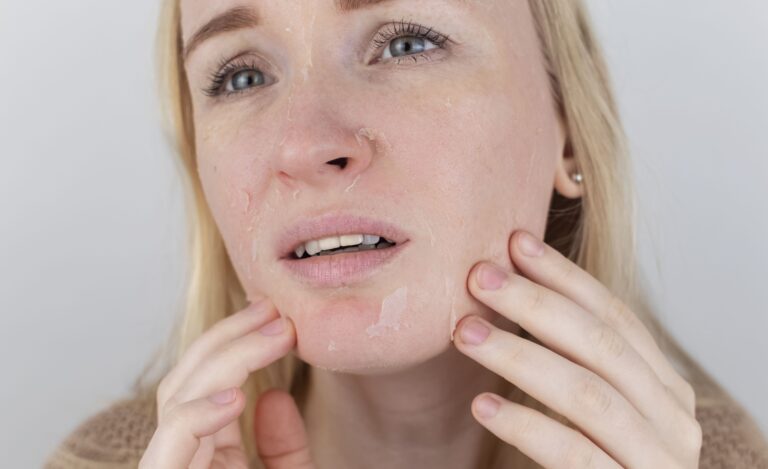Understanding your skin type is the first step in building an effective skincare routine. Using the wrong products can lead to irritation, breakouts, or excessive dryness. This guide will help you determine your skin type and explain why it matters when choosing skincare products.
Why Knowing Your Skin Type Is Important
Your skin type determines which ingredients and products will work best for you. For example, someone with oily skin may need oil-controlling products, while someone with dry skin should focus on deep hydration. Using products that don’t suit your skin type can cause imbalances, leading to issues like acne, irritation, or excess oil production.
The Five Main Skin Types
1. Normal Skin
- Balanced moisture and oil levels
- Few blemishes or sensitivities
- Pores are small to medium in size
- Skin feels smooth and even
2. Oily Skin
- Excess oil, especially in the T-zone (forehead, nose, chin)
- Prone to breakouts and clogged pores
- Larger, more visible pores
- Makeup tends to slide off easily
3. Dry Skin
- Feels tight, rough, or flaky
- Prone to irritation and redness
- Small, almost invisible pores
- May be sensitive to weather changes
4. Combination Skin
- Oily in the T-zone but dry or normal on the cheeks
- Pores may be larger in oily areas
- Can experience breakouts and dry patches simultaneously
5. Sensitive Skin
- Easily irritated by new products or environmental changes
- Redness, itching, or burning sensations are common
- May react negatively to fragrances and harsh ingredients
How to Determine Your Skin Type
If you’re unsure about your skin type, try these simple tests:
1. The Bare-Face Test
- Wash your face with a gentle cleanser and pat it dry.
- Wait 30 minutes without applying any products.
- Observe how your skin feels:
- If it feels tight, you likely have dry skin.
- If it looks shiny all over, you likely have oily skin.
- If it’s oily in some areas but dry in others, you have combination skin.
- If it feels comfortable and balanced, you have normal skin.
- If you experience redness or irritation, you may have sensitive skin.
2. The Blotting Sheet Test
- Take a blotting sheet and gently press it on different areas of your face.
- Hold it up to the light and examine the oil:
- Little to no oil = dry skin.
- Oil on the T-zone only = combination skin.
- Oil all over = oily skin.
- Minimal oil but no tightness = normal skin.
Choosing Skincare Products Based on Your Skin Type
Once you’ve identified your skin type, select products that cater to its specific needs:
- Normal Skin: Use gentle, hydrating products to maintain balance.
- Oily Skin: Opt for oil-free, mattifying products and lightweight moisturizers.
- Dry Skin: Choose rich, nourishing creams and hydrating serums.
- Combination Skin: Use lightweight products and treat different areas accordingly.
- Sensitive Skin: Stick to fragrance-free, hypoallergenic products.
Final Tips
- Skin type can change due to weather, hormones, and lifestyle habits, so reassess it regularly.
- Always patch-test new products before applying them to your face.
- Focus on ingredients suited for your skin type rather than just following trends.
By understanding your skin type, you’ll be able to make better skincare choices and achieve healthier, more radiant skin!
What’s your skin type? Let us know in the comments!




